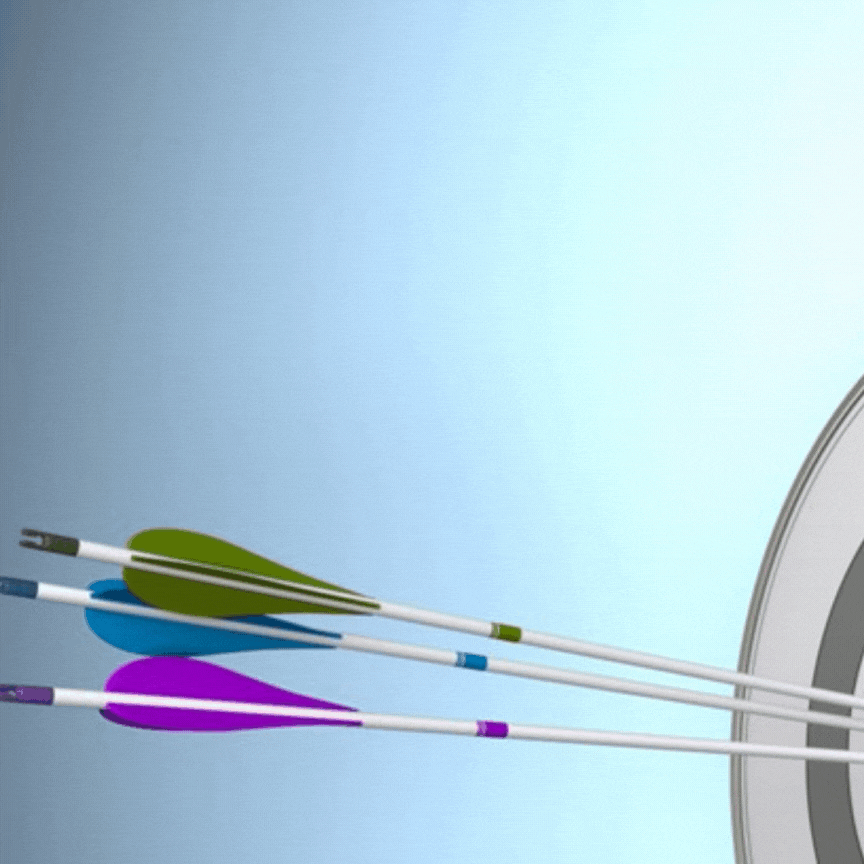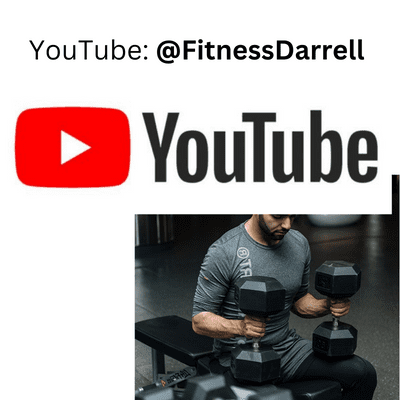
About Setting Fitness Goals and Habits
Studies have shown that habits play an important role in achieving fitness goals (Arlinghaus KR, Johnston CA, 2018). Habits are associated with a cue and can become automatic, making them more likely to be sustained over time. Researchers suggest that health goals are more likely to succeed when they are fast, convenient, and easy (Gardner, et all, 2012).
It is also important to set realistic fitness goals and not try to accomplish too much at once. Successful people often have an uncompromising attitude about fitness and exercise because it can contribute to their overall success. In fact, a lot of the top CEOs of Fortune 500 companies know of the link between fitness and work success.
Setting goals is an important aspect of physical activity and exercise. Goals help individuals focus their efforts, track their progress, and feel a sense of accomplishment when they reach their targets. Setting realistic, achievable, and measurable goals is essential for success. Here are some tips for setting and achieving fitness goals:
1. Be Specific: Clearly define what you want to achieve, for example, running a 5K in 30 minutes or losing 10 pounds in three months.
2. Make Them Measurable: Set goals that are quantifiable so you can track your progress. For example, if your goal is to increase strength, set a goal to increase your maximum bench press by 10 pounds.
3. Set Achievable Goals: Start with realistic goals and gradually increase the difficulty level. Don’t set unrealistic expectations that can lead to frustration and give up.
4. Make Them Relevant: Choose goals that align with your values, interests, and long-term goals.
5. Create a Timeframe/Time Bound: Give yourself a deadline to reach your goal. This will help you focus your efforts and avoid procrastination.
Once you have set your goals, it is important to measure your progress and make adjustments as needed. This can be done through tracking your workouts, keeping a food diary, or by taking measurements, such as body weight or body fat percentage.
Making fitness goals a habit requires consistent effort and a positive attitude.
One of my favorite books of all time is “The 7 Habits of Highly Effective People”, by Stephen Covey. I also really love “Atomic Habits” by James Clear. They overlap each other a lot, but if you live by their principles, you’ll find setting and achieving any goal will become easier. Not because the goal was easier, but partly because the habits in place and your belief in your abilities will grow.
Achieving Habits with Atomic Habits
The Atomic Habits theory, developed by James Clear, is a scientifically backed approach to creating habits that stick and become a part of our daily routine. According to this theory, small habits done consistently over time can lead to big results.
Here’s how you can use the Atomic Habits theory to create new habits related to exercise and physical activity:
- Start with a clear identity: A key part of the Atomic Habits theory is that our habits are a reflection of our identity. Therefore, the first step in creating a new habit is to identify the type of person you want to be and align your actions with that identity. If you want to be a person who is physically active, you need to start doing things that people who are physically active do.
- Make it small and easy: The idea behind making a habit small and easy is that you want to create a habit that is sustainable. A habit that you can do consistently, even when you don’t feel like it. So, start small and make the habit so easy that you can do it every day without much thought.
- Create a cue: A cue is a trigger that reminds you to start your habit. This can be a time, a place, a person, or an event. The key is to have a consistent cue that triggers your habit every day.
- Create a reward: A reward is something that reinforces the habit and makes it more likely to stick. It can be anything that you enjoy and motivates you to continue the habit.
- Make it a non-negotiable: A key part of the Atomic Habits theory is that you need to make your habit non-negotiable. This means that you do the habit every day, no matter what. If you miss a day, start again the next day.
- Track your progress: Keeping track of your progress is a great way to stay motivated and see the progress you’re making. Use a journal, a habit tracker, or an app to track your progress and see how far you’ve come.
- Surround yourself with people who support your goals: Having a support system is critical to the success of any habit. Surround yourself with people who support your goals and who will encourage and motivate you to keep going.
One example I particularly loved was when he talked about how the British cycling team was stuck in mediocrity. The new coach literally evaluated everyone’s habits and everything that contributed to their performance.
Each day, the cycling team made a change. Getting 1% better each day. Maintain the current performance, but get a little better each day. That eventually led to them winning the Tour de France.
By using the Atomic Habits theory, you can create habits that stick and become a part of your daily routine. By starting small, creating a cue and reward, making it a non-negotiable, tracking your progress, and surrounding yourself with people who support your goals, you can turn your fitness goals into habits that last a lifetime.
The 7 Habits of Highly Effective People
The 7 habits of highly effective people is a self-help book written by Stephen Covey that offers practical advice for achieving success in both personal and professional life. Covey said, “Our character is basically a composite of our habits. Because they are consistent, often unconscious patterns, they constantly, daily, express our character.” So developing the habits is key to achieving your goals.
Below, we will apply these seven habits to a fitness program and outline a plan for utilizing them to help you achieve your fitness goals.
- Be proactive: This habit emphasizes the importance of taking responsibility for one’s actions and decisions. In a fitness program, being proactive means setting achievable goals and creating a plan to reach them. This involves taking control of your health and making exercise a priority in your life.
- Begin with the end in mind: The second habit encourages people to have a clear vision of what they want to achieve in life. In a fitness program, this means having a clear understanding of your fitness goals and what you want to achieve. This could be losing weight, building muscle, or improving overall fitness.
- Put first things first: This habit emphasizes the importance of prioritizing activities that are most important and align with your goals. In a fitness program, this means dedicating time to exercise and making it a priority in your life.
- Think win-win: The fourth habit emphasizes the importance of creating win-win situations in relationships. In a fitness program, this means finding ways to make exercise enjoyable. This particularly applies to making it enjoyable with friends and family. It could include joining a fitness class, playing a new sport, or trying a new activity. The result will be a win for your friend and yourself.
- Seek first to understand, then to be understood: This habit emphasizes the importance of listening to others and considering their perspective. In a fitness program, this means taking into consideration any physical limitations or injuries of your friend(s). Modify the exercise routine accordingly if necessary.
- Synergize: This habit emphasizes the importance of working together to achieve a common goal. In a fitness program, this means finding a workout buddy. Or, joining a fitness class to work out with others and reach your goals together.
- Sharpen the saw: The seventh habit emphasizes the importance of self-care and taking care of your physical, mental, emotional, and spiritual well-being. Clearly, this is a great example of taking care of your physical self. In a fitness program, you also want to take time to recover from exercise, making sure to get enough rest, and nutrition to support your fitness goals.
By utilizing the 7 habits of highly effective people in a fitness program, you can achieve your fitness goals and make exercise a habit in your life. The key is to be proactive, have a clear vision of what you want to achieve, prioritize exercise, make it enjoyable and engaging, listen to your body, work with others, and take care of yourself.
References:
Cohen, Jennifer. “The Single Most Important Habit For Achieving Super Success.” Forbes, Forbes Magazine, 18 Oct. 2019.
Clear, James. “Atomic Habits: An Easy & Proven Way to Build Good Habits & Break Bad Ones”. Avery, 2018.
Covey, Stephen R. The 7 Habits of Highly Effective People: Restoring the Character Ethic. Simon & Schuster, 1990.
Arlinghaus KR, Johnston CA. The Importance of Creating Habits and Routine. Am J Lifestyle Med. 2018 Dec 29;13(2):142-144. doi: 10.1177/1559827618818044. PMID: 30800018; PMCID: PMC6378489.
Gardner B, Lally P, Wardle J. Making health habitual: the psychology of ‘habit-formation’ and general practice. Br J Gen Pract. 2012 Dec;62(605):664-6. doi: 10.3399/bjgp12X659466. PMID: 23211256; PMCID: PMC3505409.









